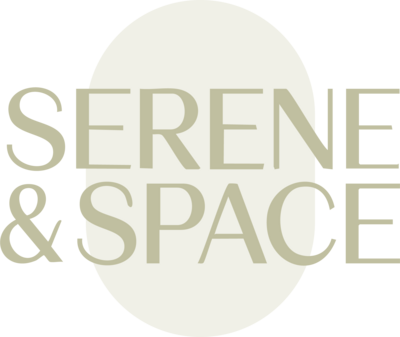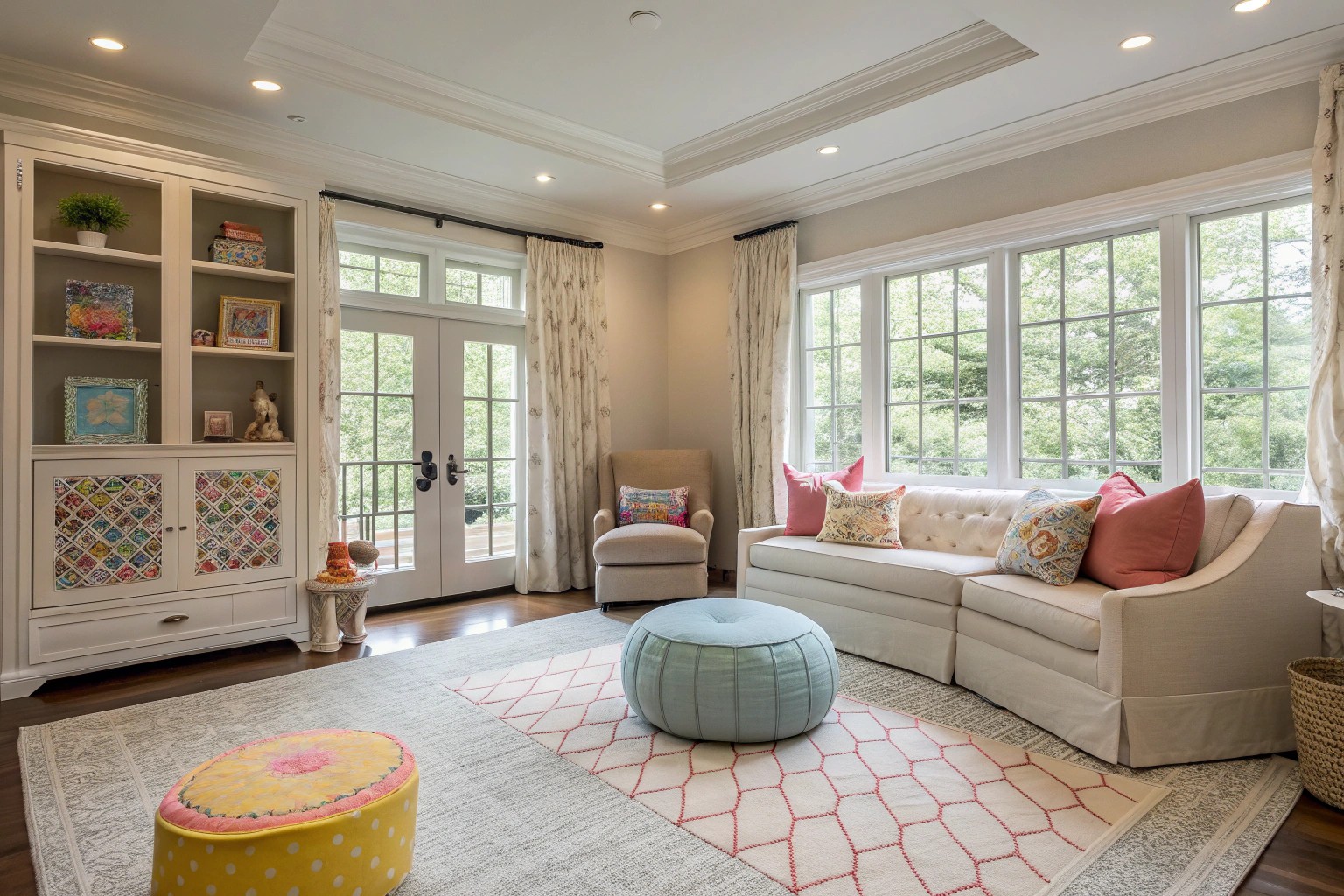Creating beautiful, functional spaces that serve both children and adults requires a thoughtful approach that moves beyond the traditional bright primary palette. The key lies in selecting sophisticated color schemes, durable materials, and flexible design elements that evolve with your family’s changing needs while maintaining visual appeal for all household members.
The Psychology of Sophisticated Color in Children’s Spaces
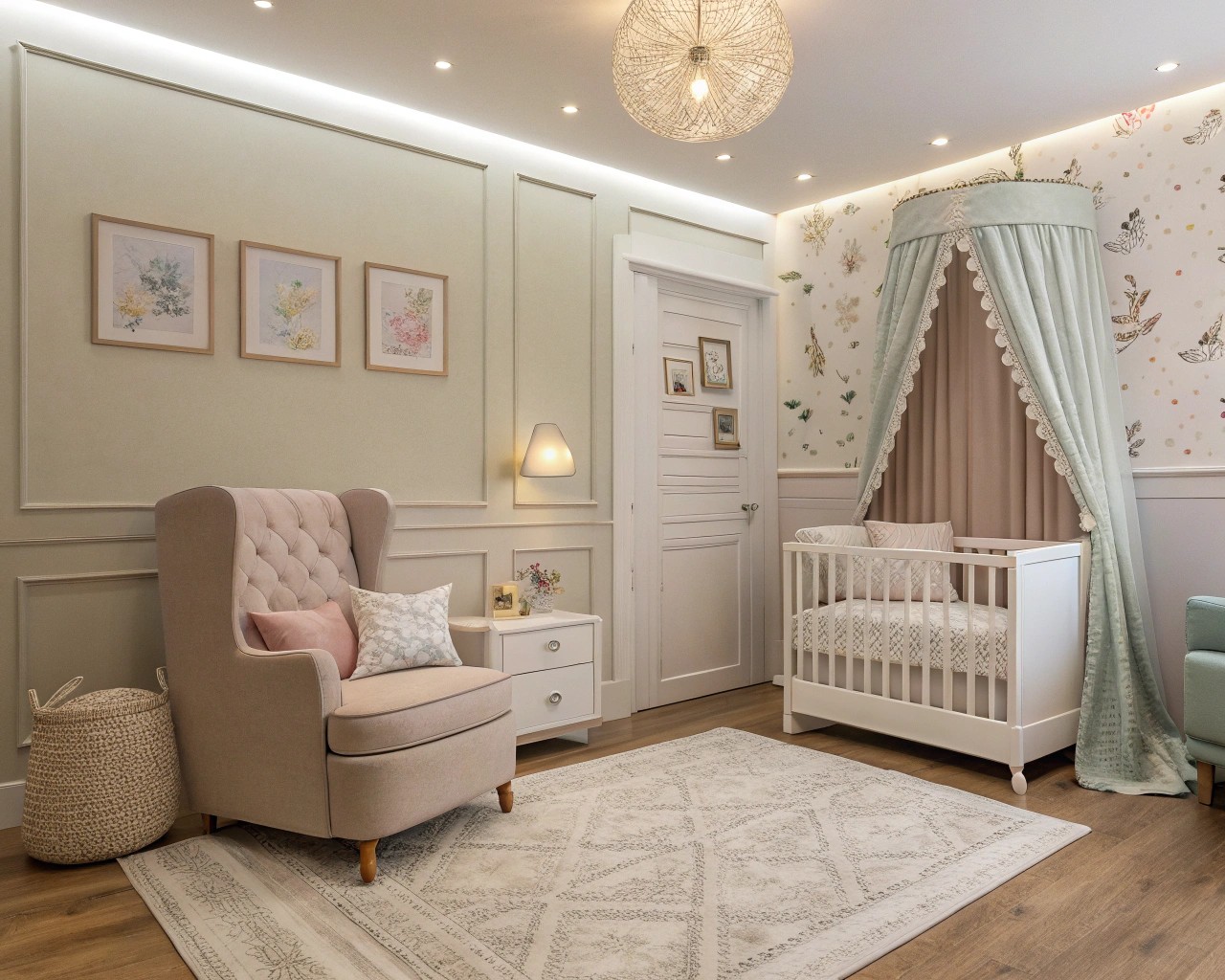
The widespread belief that children need bright, stimulating colors has been largely debunked by contemporary design research. Muted colors offer distinct advantages that benefit both children and their families long-term. These sophisticated palettes create calming environments that don’t overwhelm young nervous systems while maintaining the flexibility to adapt as children grow.
Muted pink represents an excellent alternative to traditional bright pink, offering “the softer side of the hue” that appeals to multiple generations in the household. This approach allows parents to honor a child’s color preferences without creating spaces that feel juvenile or require frequent updates. Similarly, muted blue serves as “the most calming of the lot” while breaking free from strict gender associations.
The practical benefits extend beyond aesthetics. Neutral and muted color schemes provide a backdrop that accommodates changing toy collections, artwork, and furniture additions without requiring complete room overhauls. As children develop their own style preferences, these foundational colors support rather than compete with personal expression.
Strategic Color Implementation
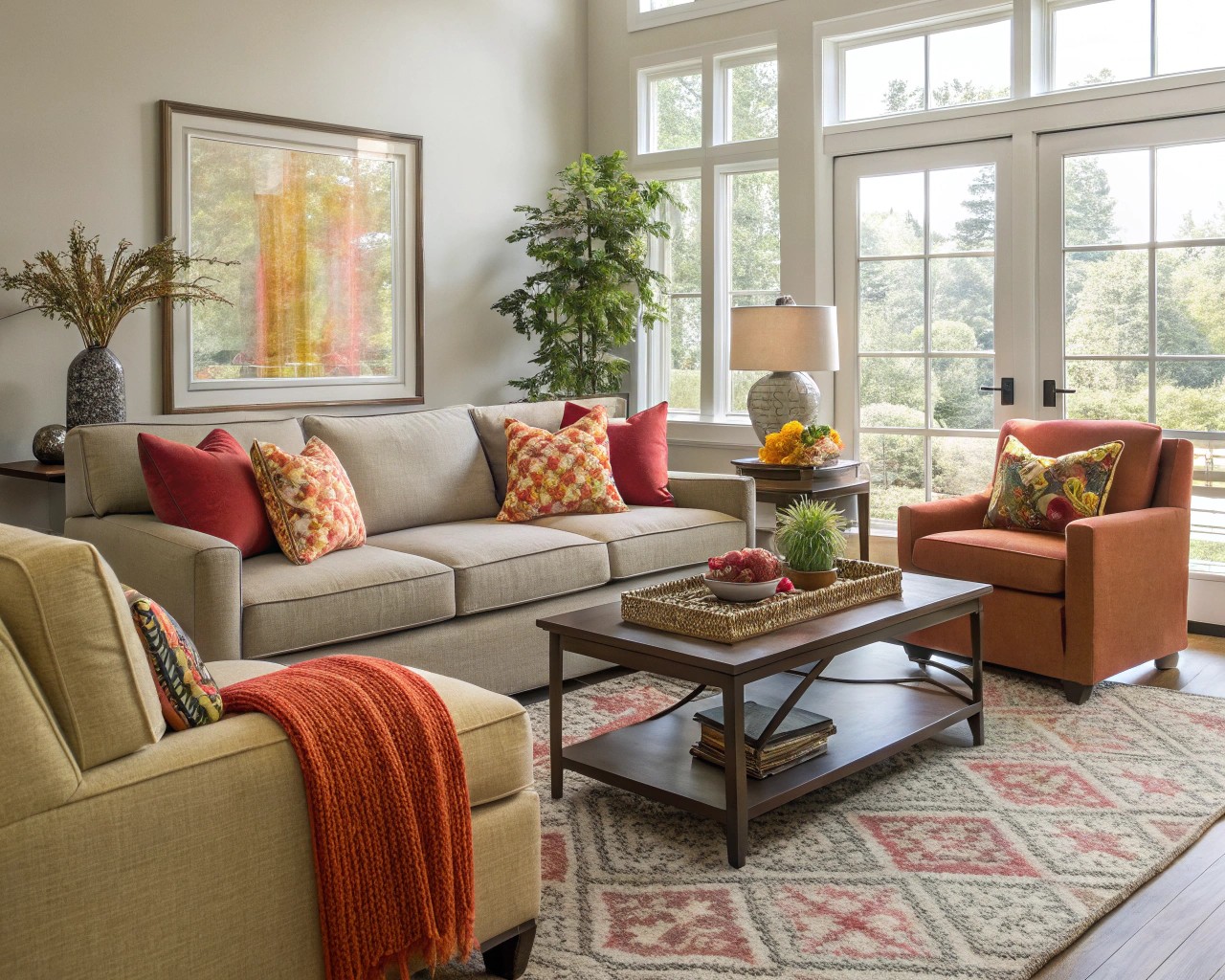
When working with families, I’ve found success using the 60-30-10 rule adapted for kid-friendly spaces: 60% neutral base colors, 30% muted accent colors, and 10% vibrant pops that can easily change. This formula ensures visual cohesion while allowing for personality and fun.
Base Colors for Longevity:
- Warm grays with subtle undertones
- Soft whites and creams
- Gentle beiges and greiges
- Dusty sage greens
Accent Colors That Grow:
- Dusty rose or muted coral
- Soft lavender or periwinkle
- Sage green or eucalyptus
- Warm taupe or mushroom
Changeable Pop Colors:
- Throw pillows in seasonal hues
- Artwork and wall decals
- Bedding and curtains
- Toy storage in coordinating colors
Material Selection for Durability and Style
The foundation of successful kid-friendly design lies in choosing materials that withstand daily wear while maintaining visual appeal. This requires understanding both the physical demands of family life and the aesthetic goals of sophisticated interior design.
Fabric Strategies
High-performance fabrics have revolutionized family-friendly furniture options. Microfiber and leather selections offer “protection against spills and are easy to clean” while maintaining the sophisticated appearance adults prefer. Teflon-coated fabrics provide an additional protective layer without compromising texture or visual appeal.
For upholstered pieces, consider performance fabrics that feel luxurious but resist staining and wear. Crypton fabrics, for example, offer liquid protection while maintaining the hand-feel of traditional textiles. These materials allow families to invest in quality furniture without constant worry about damage.
Surface and Flooring Considerations
Flooring selection significantly impacts both aesthetics and functionality in family homes. “Easy-to-clean surfaces” become essential in kid-friendly interior design, extending from countertops to flooring materials. Quartz and granite countertops offer durability and easy maintenance while supporting sophisticated design schemes.
For flooring, luxury vinyl planks provide the appearance of hardwood with enhanced durability and water resistance. When selecting wood floors, harder species like oak or maple with appropriate finishes can withstand heavy use while aging gracefully.
Performance Material Matrix
| Material Type | Best Options | Benefits | Style Compatibility |
|---|---|---|---|
| Upholstery | Crypton, microfiber, leather | Stain resistance, easy cleaning | Contemporary, traditional, transitional |
| Countertops | Quartz, granite, solid surface | Durability, non-porous | All design styles |
| Flooring | Luxury vinyl, engineered hardwood | Water resistance, scratch resistance | Modern, rustic, classic |
| Window Treatments | Solution-dyed acrylics, polyester blends | UV resistance, washability | Casual to formal |
Safety Integration Without Aesthetic Compromise
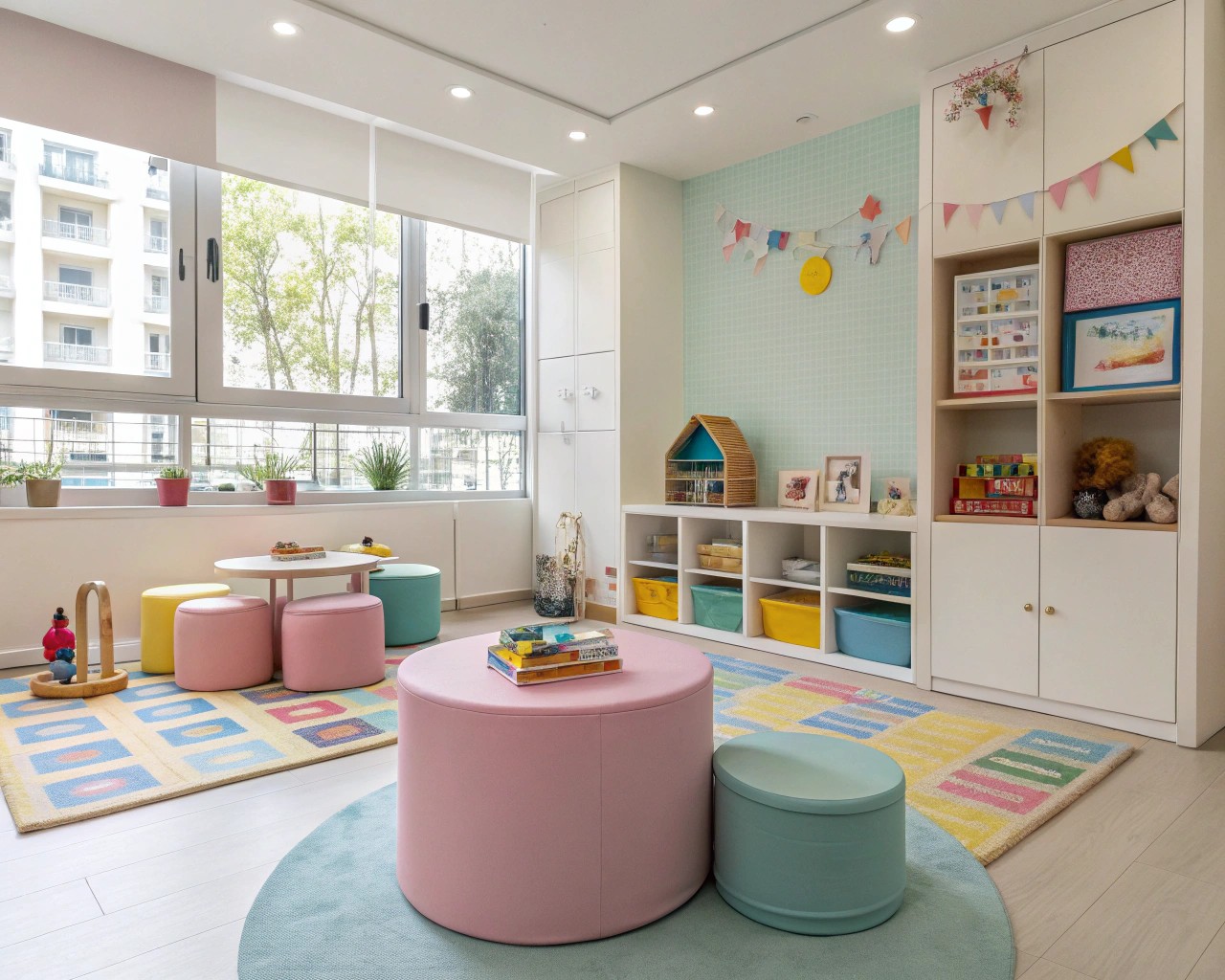
Modern safety considerations have evolved beyond basic childproofing to encompass design elements that inherently reduce hazards while maintaining visual appeal. This approach requires understanding how form and function can work together rather than against each other.
Furniture Design for Safety
Rounded furniture edges represent a fundamental safety consideration that doesn’t require sacrificing style. “Rounded furniture edges are a key component of child-safe home decor” that simultaneously creates “a softer, more inviting look”. Contemporary furniture designers increasingly incorporate these safety features into sophisticated pieces that appeal to adult sensibilities.
Built-in seating options provide both safety and style benefits. Banquette seating eliminates sharp corners while offering efficient space utilization and storage opportunities. These installations feel intentional and sophisticated rather than child-specific.
Electrical and Fixture Safety
Modern electrical safety extends beyond basic outlet covers to encompass integrated design solutions. “Wall-mounted fixtures” eliminate cord hazards while providing clean, contemporary lighting solutions. LED technology offers both safety benefits through reduced heat generation and design flexibility through varied color temperatures and fixture styles.
Lighting design for children’s spaces requires balancing safety with functionality. “LED bulbs emit minimal heat while being energy-efficient and long-lasting,” making them ideal for fixtures within children’s reach. Consider dimmer controls that allow adaptation from bright task lighting to gentle bedtime illumination.
Safety-First Design Elements
Inherently Safe Furniture Choices:
- Ottoman storage with soft-close hinges
- Built-in window seats with rounded edges
- Wall-mounted shelving systems
- Furniture with anti-tip hardware integrated during manufacturing
Electrical Safety Integration:
- Recessed lighting eliminates dangling cords
- USB outlets integrated into furniture
- Battery-operated accent lighting
- Smart switches accessible to children
Strategic Storage Solutions
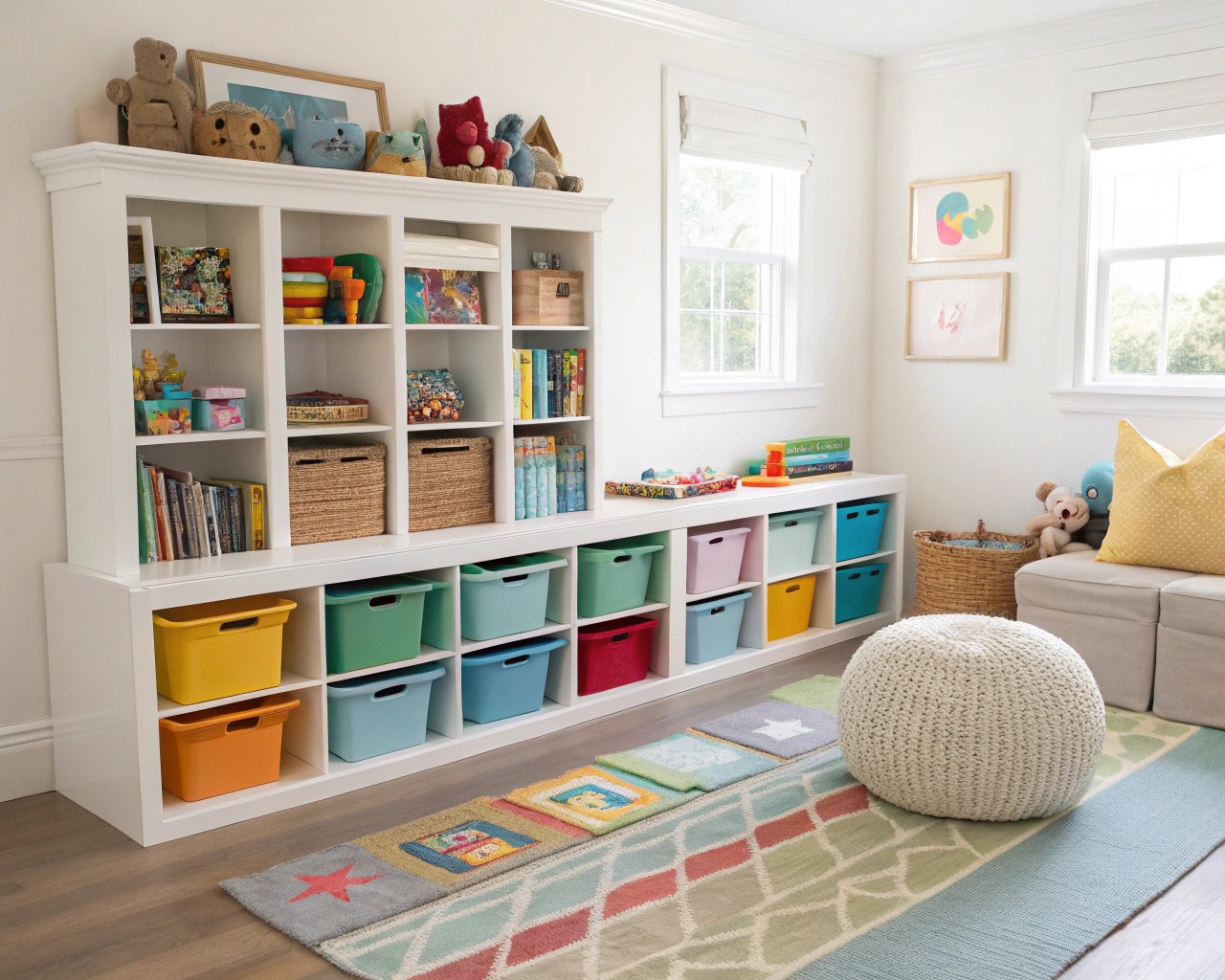
Effective storage design in family homes requires systems that function for both children and adults while maintaining visual appeal. The goal is creating organized spaces that don’t appear cluttered or institutional despite accommodating significant amounts of belongings.
Multi-Level Storage Systems
Children need access to their belongings at appropriate heights, while adults require storage for items meant to remain out of reach. “Low shelves mean that even the smallest kid can find their toys (and put them away on their own) while everything still has a tidy spot”. This approach promotes independence while maintaining organization.
Implementing storage at multiple heights creates visual interest while serving practical needs. Higher shelving accommodates adult items and displays, while lower storage remains accessible to children. Built-in solutions often provide the most seamless integration with overall design schemes.
Hidden Storage Integration
Storage doesn’t need to announce itself to be effective. “Storage benches, and ottomans with hidden compartments are excellent options for keeping your home clutter-free”. These dual-purpose pieces maintain clean lines while providing substantial storage capacity.
Consider incorporating storage into unexpected places: window seats with lift-up tops, stair drawers, and hollow furniture legs. These solutions maintain sophisticated appearances while dramatically increasing storage capacity.
Storage Solutions by Space
Living Areas:
- Built-in media centers with concealed toy storage
- Ottomans with internal organization systems
- Bookcases with mixed open and closed storage
- Under-stair storage accessible to children
Bedrooms:
- Platform beds with integrated drawers
- Armoires adapted for toy and clothing storage
- Wall-mounted floating shelves at child height
- Over-door organizers for small items
Play Spaces:
- “Colorful woven baskets” that complement design schemes
- Clear storage bins for visibility and organization
- Built-in cubbies sized for specific toy categories
- Mobile storage carts that move between spaces
Creating Multi-Functional Spaces
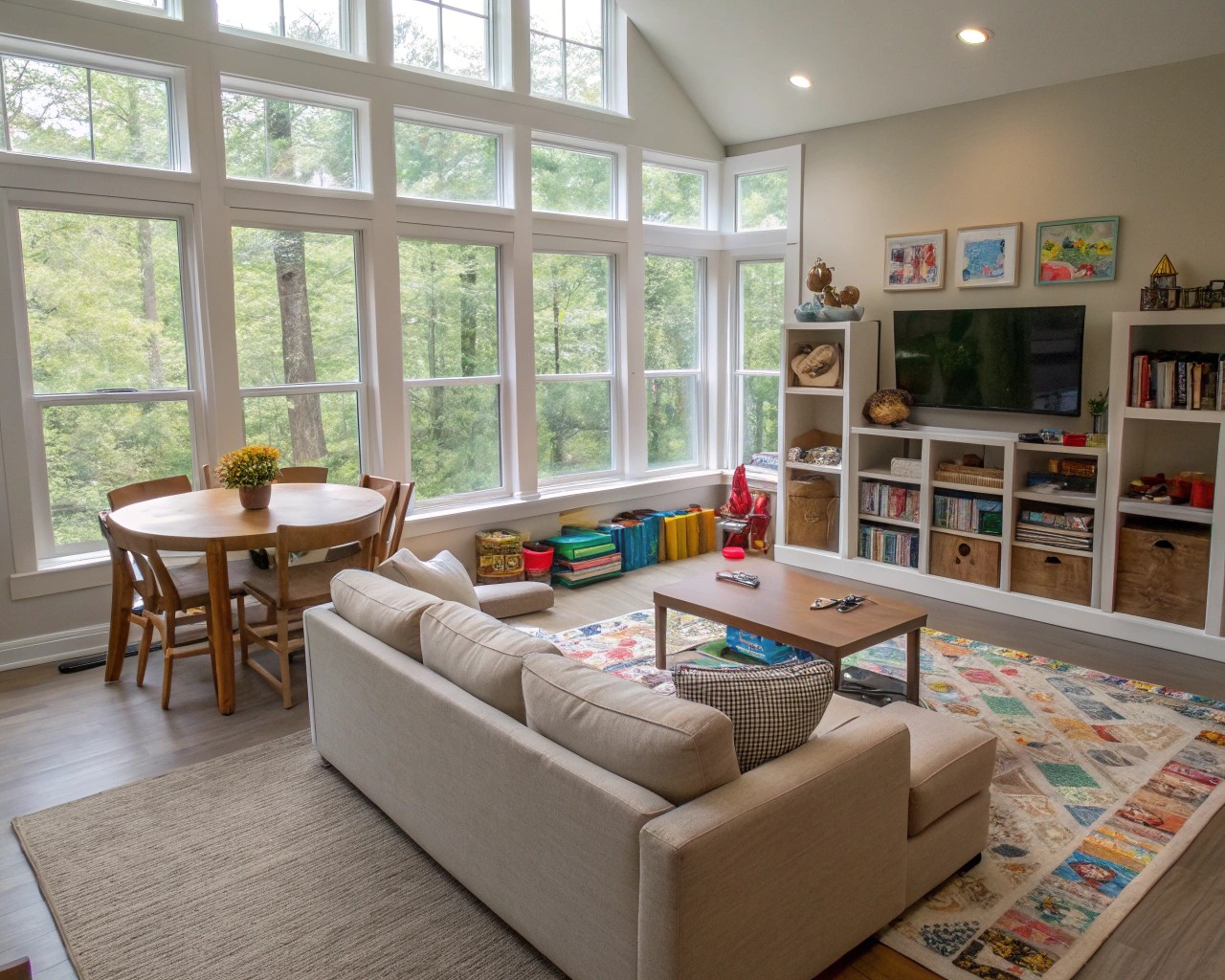
Modern family life demands spaces that adapt to changing needs throughout the day. Successful multi-functional design requires understanding activity patterns and selecting elements that support various uses without constant rearrangement.
Flexible Furniture Systems
Modular furniture systems offer unparalleled adaptability for growing families. “SoftScape Big Blocks” exemplify this approach, providing safe building elements that “encourage the safe development of fine and gross motor skills” while storing compactly when not in use. Similar principles apply to adult furniture: pieces that nest, stack, or transform serve multiple functions.
Seating arrangements should accommodate both adult conversation and children’s activities. Deep sectional sofas provide comfortable adult seating while offering safe surfaces for children’s play. Consider pieces with removable cushions that create floor play areas when needed.
Zone-Based Design
Rather than creating separate spaces for children and adults, successful family design establishes zones within larger spaces. This approach allows simultaneous activities while maintaining visual cohesion. “Zone the garden” principles apply equally to interior spaces: creating “different places for different moods”.
Activity zones might include quiet reading corners, active play areas, and collaborative spaces for family activities. These zones can overlap and change function throughout the day while maintaining their essential character.
Multi-Functional Space Examples
Kitchen Integration:
Adding “a work table or second island to the kitchen” creates child-accessible workspace while maintaining adult functionality. These additions provide homework stations, craft areas, and cooking participation opportunities without disrupting primary kitchen functions.
Living Room Adaptability:
- Nesting tables that expand surface area when needed
- Accent chairs that move easily between conversation and activity areas
- Media centers with both adult entertainment and children’s gaming capabilities
- Area rugs that define play zones within larger spaces
Outdoor Integration and Continuation
The most successful family-friendly designs extend beyond interior spaces to create seamless indoor-outdoor living environments. This approach maximizes usable space while providing varied experiences that support different types of play and relaxation.
Garden Design for Families
Outdoor spaces can accommodate children’s needs while maintaining sophisticated design appeal. “Play areas can be integrated into gardens in a stylish, non-obtrusive way” through thoughtful planning and material selection. The key lies in choosing elements that serve multiple purposes and age gracefully.
Water features exemplify this dual-purpose approach. “A shallow, stone-edged water table can double as a reflecting pool or wildlife basin” while providing sensory play opportunities for children. These installations offer year-round visual interest while supporting different activities across seasons.
Natural Play Integration
Contemporary landscape design increasingly emphasizes natural play elements that stimulate imagination without dominating garden aesthetics. “Let nature inspire you” by incorporating existing trees and natural features into play experiences. A mature tree can serve as climbing structure, swing support, and shade provider while maintaining its landscape value.
Consider pathways that serve both design and functional purposes. “Circular, winding paths take up little space” while providing adventure routes for children and pleasant walking experiences for adults. These paths can incorporate different textures and materials that add sensory interest and visual appeal.
Integrated Outdoor Elements
Multi-Purpose Water Features:
- Reflecting pools with shallow edges for safe interaction
- Dry creek beds that become play landscapes during rain
- Rain gardens that demonstrate environmental principles
- Fountains with multiple height water streams
Natural Play Structures:
- Boulder arrangements for climbing and seating
- Log balance beams integrated into planting schemes
- Willow tunnels that provide seasonal interest
- Raised planters that double as seating and play surfaces
Transition Zones:
- Covered porches that extend indoor activities outside
- Outdoor storage for toys that maintains design continuity
- Seating areas visible from indoor spaces for supervision
- Shade structures that accommodate both play and relaxation
Future-Proofing Family Design
Successful family-friendly design anticipates changing needs and preferences over time. This long-term perspective ensures investments remain valuable as children grow and family dynamics evolve.
Adaptable Color Strategies
The most sustainable approach to color in family spaces involves selecting base palettes that support rather than compete with changing preferences. “Neutral color palette makes selling your home much easier” while providing flexibility for personal expression. This principle applies equally to family adaptation over time.
Consider implementing color through easily changeable elements: artwork, textiles, and accessories. This approach allows children to influence their environment without requiring major renovations as tastes mature.
Growth-Accommodating Furniture
Invest in quality pieces that serve multiple life stages rather than age-specific items that require replacement. Platform beds grow from toddler safety to teen sophistication. Built-in desks accommodate homework from elementary through high school when properly proportioned.
System-Based Thinking
Design systems rather than individual rooms to create coherence that spans the entire home. Consistent flooring, trim details, and lighting approaches create visual flow while accommodating varied furniture and decor changes over time.
